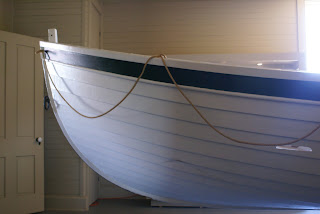Christmas Day, 1950. Four Scottish college students creep through the early morning murk to Westminster Abbey. In a daring display of subterfuge, worthy of any number of secret agent movies, they break into the Abbey. Keeping to the shadows, they make their way towards the wooden Coronation Chair, seat of British monarchs since 1300. And break the chair. Not the political statement it may seem; the Chair was collateral damage to the real objective. The Chair was built around the Stone of Scone, known to all Scots, including our intrepid students, as the Stone of Destiny.
But of course, as with all stories of theft and skullduggery, more information is required to flesh out the details leading to such a seemingly heinous crime.
I heard the story of the Stone on Destiny on a bus out of Edinburgh, a tour called Highlands, Waterfalls. and Distilleries. Our guide, Mac MacKenzie, kept us regaled between stops with stories of Scottish history and folklore. Outside of Perth, he pointed out Dunsinane Castle of MacBeth fame, near Birnham Wood. And in the midst of hills, glens, and sheep, Mac began to tell us the story of Scotland’s most famous artifact.
Kept on display with the Scottish Crown Jewels deep within the dank walls of Edinburgh Castle, rests the Stone of Destiny. The premier symbol of Scottish nationalism, the Stone, in addition to being called the Stone of Scone (pronounced “Scoon”), is also called the Coronation Stone, and Lial Fail in Scottish Gaelic, has by custom and by tradition been used in the coronations of Scottish kings since Kenneth MacAlpine, the first Scots king in 847. Legend has it the stone was transported through Spain and Ireland from the Holy Land where it was the pillow used by the prophet Jacob when he dreamt of a visitation by God. Jacob awoke and turned the stone to its side as an altar to Jehovah, the first one.
The Stone actually doesn’t look like anything special—an oblong block of chiseled reddish sandstone, a small cross, and iron handles at each end. Two feet long, a foot thick, and one foot wide and weighing about 350 pounds, it’s just a big rock and far more modest than its name might suggest. It was kept for centuries in the abbey of Scone, near Perth.
In 1296, the Stone was captured (stolen, depending on your point of view) by King Edward I of England as part of his never-ending campaign to subdue Scotland. Edward, “the hammer of the Scots”, took Edinburgh and announced he was marching on Perth to capture the Stone. Logic had it that whoever possessed the Stone was the rightful King of Scotland and Edward Plantagenet, every bit the homicidal megalomaniac so aptly portrayed by Patrick McGoohan in Brave Heart, was bound and determined to add Scotland to his collection of conquests.
Edward and his army took a month to march the 50 or so miles from Edinburgh to Perth, fighting every inch of the way. When they arrived, Edward burned the Abbey, slaughtered the monks, and took the Stone to London. He had a special chair constructed, placing the Stone on a low platform below the seat. The chair became the Coronation Chair, used by every British monarch since 1300.
Edward never did complete his conquest of Scotland, dying in Edinburgh and cursing the Scots with his final breath. His son, after a bloody defeat on the battlefield at the hands of Robert the Bruce, thought better of the whole thing and went home.
The official story is that in 1996, after 700 years of political wrangling, the Stone was transported back to Scotland where it remains to this day. “End of story” said Mac. “Or is it?”
Enter our intrepid four led by Ian Hamilton, all students at Oxford and all members of a Scottish Nationalist Society. Having cased the joint, and determining that the best time to enter would be the small hours of Christmas morning when security would be dozing, the four lifted the stone and spirited it away. Not quite. While carrying it out of the Abbey, someone lost their grip on an iron ring and dropped the stone. And broke it. Scotland’s most sacred symbol was lying in two pieces on the marble floor of Westminster Abbey. It had survived centuries of transport in sailing ships and oxcarts, gone through sieges and warfare, only to be broken by four kids in what was essentially a prank. Worse, it had fallen on the foot of one of the would-be hijackers, breaking two toes and making him pretty much useless in helping to move the bits.
Somehow the students got the Stone outside and into a waiting car. They hid the Stone in various places for the next several weeks while a Nation-wide search commenced. They drove it across the border, getting past police roadblocks, with the Stone covered with a blanket and disguised as the back seat of their car.
When they made it to Scotland, they contacted a sympathetic Scottish politician who took the stone to a master mason for repair. The mason repaired the Stone and left it on the remains of the altar stone in the ruins of Arbroath Abbey near Perth. The mason assumed the Church of Scotland would protect the Stone, but police soon retrieved it and the Stone was returned to London and to a presumably fixed Coronation Chair.
Hamilton and his three accomplices turned themselves in and were promptly arrested. Within a week, all charges were dropped and the matter laid to rest. Under British law, the Crown would have had to prove rightful ownership. Since the Stone had been stolen to begin with, the powers that be decided to pretend the whole thing never happened. Ian Hamilton went to law school, become a prosecutor, and his friends went on to distinguished careers of their own. A happy ending to the story…or is it?
Mac had more tidbits to add. He had once worked with James Hamilton, Ian’s son who told him that when the students dropped the Stone, it actually broke into three pieces, not two. The third piece was small enough for Ian to slip into his pocket and forget about. Later, he had the fragment made into a necklace and gave it to his bride as a wedding present. Happy ending number two.
After the Stone was recovered, rumors began to fly that the mason had not only repaired the Stone itself, but had also made an exact copy. The copy he left at Abroath Abbey for the police to find. The real Stone, labeled a replica, is on display at the abbey—the Stone of Destiny is in Scotland. Happy ending number three.
Mac then mentioned that medieval chroniclers described the original stone as round, black, and polished, with symbols inset with silver. It may have been a fragment of meteorite. As best as can be determined, the Stone on display at Edinburgh Castle is common Perthshire sandstone.
“Imagine” said Mac, “that you are the abbot of Scone and learn that the most bloodthirsty ruler in Europe has announced that he is headed your way to steal the very symbol of your people. You have maybe a month to do something. What do you do? You hide it and come up with a substitute.” According to Scottish fable, the stone Edward took to London, the stone that British monarchs have been crowned over for 700 years, is actually the stone cap of the abbey cesspit. British coronations have taken place in pomp and pageantry over what is essentially a toilet seat lid. When all is said and done, it appears that the Stone of Destiny, object of desire, theft, national identity, and fierce pride is a copy of a fake.
Which begs the question: where is the real Stone? Mac ended his story with the tale of two kids, playing on a hillside near Dunsinane Castle after a rainstorm. They slipped down a mudslide into an underground chamber, injuring one of them. Within the chamber they claimed to have seen a smooth rock, round and black with silver symbols, half buried in the dirt. After getting to safety and a doctor, the boys came back with their fathers. They found the chamber but it was empty. The real stone remains hidden from mortal view, which is probably as it should be.
 The warriors of winter give a cold triumphant shout
The warriors of winter give a cold triumphant shout

















































